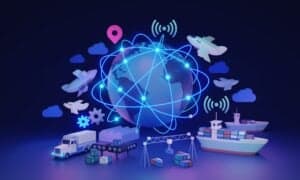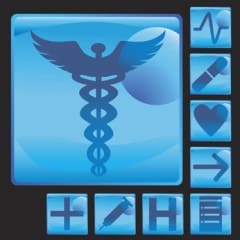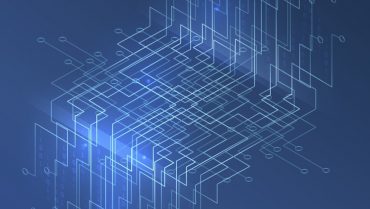
In today’s era of digital transformation enabled by the IoT, enterprise-ready IoT is taking our digital transformations all the way out to the edge.
A digital transformation is fully upon us, meaning it is time to jump in with both feet – implement our own transformations, learn from our early efforts, and keep getting better. Fail quickly, learn, and move on to continue our digital transformations.
Digital transformation…why does this phrase seem familiar? It is because we have been through several iterations of it, with each iteration feeling more innovative than the last. That is just, by its nature, technology. First, we moved to a digital-first approach, then to the birth of the Internet, from which we broadened into mobile and cloud-based operations. Each time, this digital transformation has led the agenda of what enterprises aim to accomplish. And now, it is the era of digital transformation enabled by the Internet of Things (IoT). Enterprise-ready IoT is taking our digital transformations all the way out to the edge.
It is imperative for technology to adapt and evolve in order to meet modern demands. Just look at how globalization and the pandemic have shifted operations in logistics. The global, multimodal supply chain is incredibly complex, and more of it needs to be digitized. Instead of simply tracking items by GPS, the supply chain requires a holistic, end-to-end, full visibility, and agile approach that can adequately keep up with ever-evolving demands – i.e., supply chain constraints that spread globally and bent when pressure was applied during the COVID-19 pandemic in 2020.
Similarly, in healthcare, a booming digital transformation is taking place, changing how we treat patients, create new drugs, and craft treatment protocols. Remote Patient Monitoring (RPM) alone has tripled since the onset of the pandemic. Prior to 2020, a mere seven percent of patients had ever experienced a virtual consult. Just one year later, that number rose to 32%. This adoption was not just born of necessity; rather, patients found this new, highly accessible approach to healthcare desirable. In fact, a global survey showed that nine out of 10 respondents felt their virtual healthcare experience was as good or better than traditional in-person care.
A virtual component was also introduced to decentralized clinical trials. One of the most difficult challenges in clinical trials is moving from phase one to two, and a significant portion of that is due to the need for clinical efficiency. Data collection and accuracy are paramount in clinical trials but are more susceptible to human error when done manually. For drug development that costs billions and takes years to launch, the current 90 percent failure rate can be devastating.
The need for digital transformation continues beyond healthcare and pharmaceuticals. Agriculture is also an area that is digitizing rapidly, creating a dire need for technology-driven solutions to address labor and water shortages, agricultural challenges related to farming, and environmental impacts such as pests, disease, climate, and biodiversity – all of which adversely affect food supply in areas with growing populations.
In fleet management, the use cases are equally as broad, impacting both the enterprise side and manufacturing sector, where advancements in technology can help mitigate challenges in safety, workforce, efficiency, and rising costs of fuel and insurance. The same goes for inflating material and equipment costs that have been exacerbated by workforce shortages and other challenges within the manufacturing sector.
Demand fuels the development of technological advancements, which continue to fuel a sweeping wave of enterprise digital transformation. What is significant is how these technologies converge and the powerful digital future that is emerging as a result. IoT has matured in a way that makes it simpler to adopt through a combination of more affordable, diverse hardware and connectivity, decentralized computing via the cloud, and a flux of IoT providers – all of which work together to create a global ecosystem that is moving us forward.
Now, we stand at the precipice of great advancement with connectivity technologies in 5G and low power wide area (LPWA) networks, computing power through and at the edge, and powerful algorithms driving Artificial Intelligence (AI) and Machine Learning. But the era of AIoT – where AI meets IoT – cannot happen without digitization and data and a drive to connect every edge device.
See also: IoT Connections To Grow by 400% In Four Years
The role of enterprise IoT
Digital transformation certainly takes on a new meaning when the convergence of these technologies occurs. So, how can enterprises meaningfully unleash the power of IoT, AI, 5G, and other technologies for digital transformation? I’ve uncovered three key points for success:
1) Start. Digital solutions in manufacturing are a great example of how to start and build on success. Often, with digital solutions, there is so much to choose from that it can be challenging to know where and how to begin. Pilot programs may never get off the ground due to complexity, an inability to prove ROI or a lack of knowledge about how to integrate with or migrate from legacy systems. Supervisory Control and Acquisition Data (SCADA) systems are very common in industrial manufacturing – a digital approach to machine monitoring and data capture.
These systems have been highly effective and were a major part of the last digital transformation in the industrial space. To throw these systems out would cause upheaval and be quite costly, so choosing a technology that can build upon the success of SCADA and integrate and position for the adoption of future technologies is ideal. IoT can help by pairing sensor-enabled devices with cellular connectivity that can systematically build upon prior-generation investments. The added capabilities of edge computing, 5G, and AI can power even more digitally-advanced solutions that will provide ROI well into the future. IoT is a key driver for bridging these two digital transformation eras.
2) Build with agility. The forward motion of technology is inherent, as is the need to adapt alongside it. The digital transformation in retail is an interesting use case that demonstrates the concept of building with agility. Many processes within the retail space leverage digital solutions. The front of the store needs to communicate with the back of the store regarding products, whether they are in stock or, if not, how quickly they can arrive at the end location. Point-of-sale systems are extremely common and becoming more diverse, and online ordering for curbside pickup has been steadily growing.
As digital solutions expand within retailers, greater bandwidth is needed, and the primary connectivity point for brick-and-mortar stores is typically wireless solutions. But as those digital solutions grow, the more crucial connectivity becomes, and sometimes bandwidth can be strained or unplanned downtime occurs, leaving these solutions in the dark. Many retailers now leverage 5G as failover connectivity if wireless solutions fail. Not only does this work seamlessly with existing solutions, but it also builds agility to help organizations move toward fully cellular connectivity, with many retailers choosing cellular connectivity as primary to support their broadening digital solutions. IoT is significant in tying together digital solutions via connectivity, and business connectivity is a rapidly growing area in enterprise IoT.
3) Streamline to mitigate complexities. New technologies can be incredibly complicated. As outlined in the first two practical tips, IoT is the engine for digital transformation because it touches everything. To over-simplify for a minute, IoT is the set of technologies that connects devices via some form of network to deliver the data to the applications where the analytics will occur, providing insights to the end-user and helping make quicker and better business decisions. However, that includes a very broad set of technologies, which certainly creates complexity. Devices can be bought, developed, and white-labeled; connectivity can come in numerous forms from hundreds of network providers; computing requires data delivery with the right data at the right time; devices need to be certified, configured, and shipped; and so on.
Many different types of providers are involved in these areas, and organizations may find they are dealing with ten or more providers to deliver a single end-use case or application, which can be difficult and costly to manage. The closer organizations can come to capturing the different elements of the ecosystem from a single source, and the easier it can be to harness the power and capabilities of IoT, whether that is from a build, deploy, manage, or scale standpoint.
It is a truly exciting time for technology, and this IoT-driven digital transformation is unlike any ‘strategic era’ we have seen before, which is a bold statement. But when the really high demand for digital solutions converges with this newer, powerful technology, it creates a stepped-up environment for innovation that will have impacts for decades to come.




























